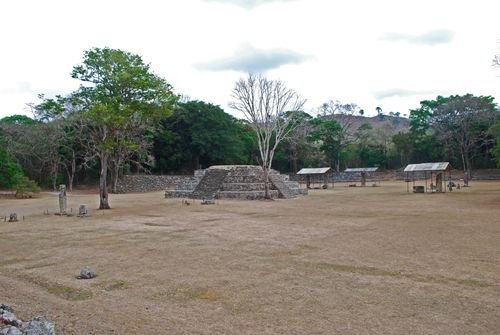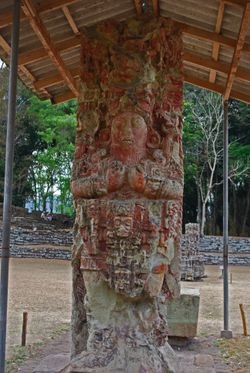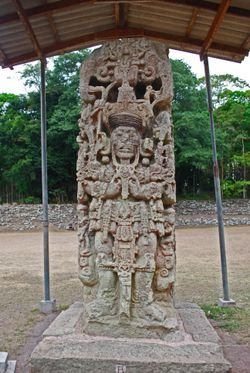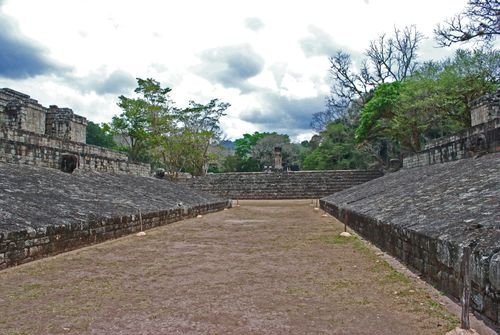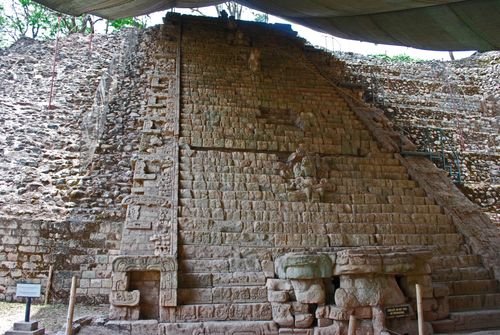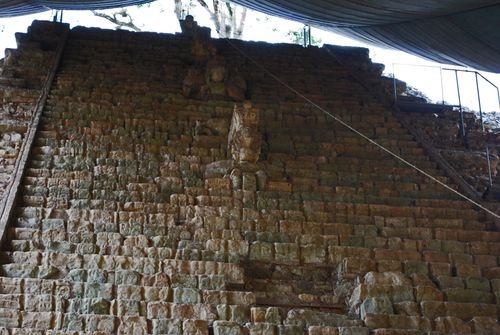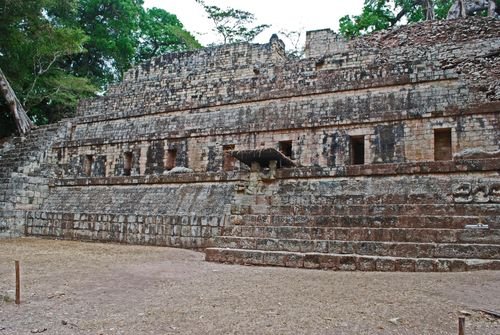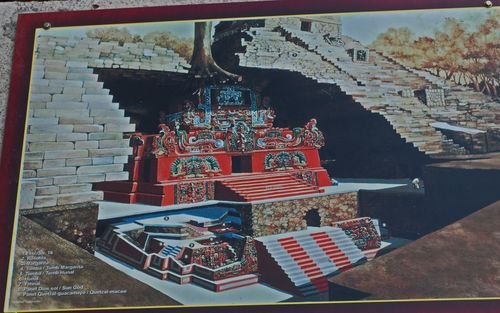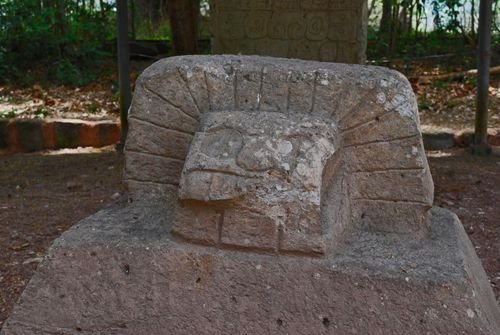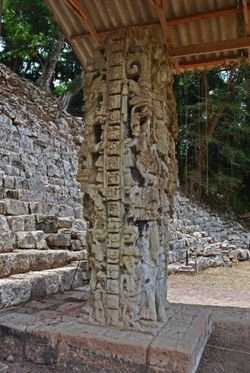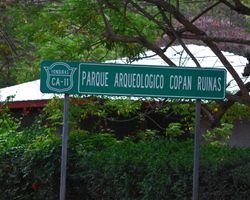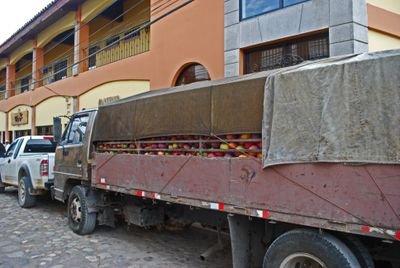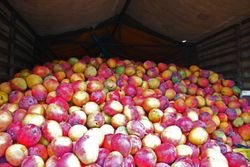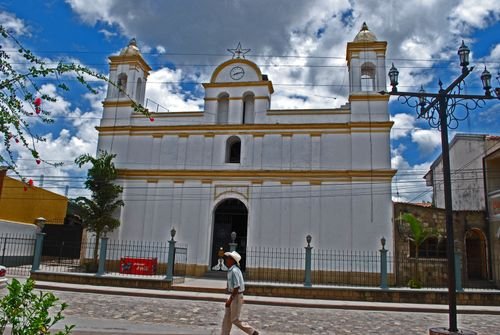Not much food on this post, but if you enjoy Mayan Ruins read on……
After visiting the Museum of Sculpture we headed off to the ruins. Though the Archaeological Park is not very large, it is believed that at its peak Copan was the cultural center of the Mayan civilization. As you enter the ruins that first place you usually start at is called the Great Plaza:
We arrived during the end of the dry season, but it’s easy to imagine the green fields…..
One of the more interesting things about the great plaza are the intricately carved Stela placed among the plaza. We were told that these Stele represent various rulers and gods.
Do you notice the red pigment?
The red pigment is a mixture of mercury sulfate and other items, and it is believed that all the Stele were once covered with this pigment.
Another Stela grabbed our attention. If you look closely at the carving of the face, it looks almost Asian, doesn’t it? As does the head-dress.

Our guide told us, that she believes that the original Mayans and Incas came from Asia, across the Bering Straight and into the Americas.
Another popular area in the park is the Mayan Ball Court and the hieroglyphic stairway.

The ball court is the second largest in Central America.
Yes, folks have been playing ball in Meso-America for over 3000 years. Of course there were some serious ramifications, not for losing, but for winning the game. We were told that the Captain of the winning team would present himself to the losing Captain, who would behead him. It was thought to be the highest honor…..
Right past the ball court is the hieroglyphic stairway.
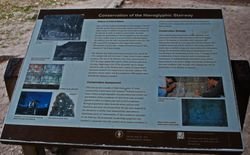 The stairway consists of 63 steps and 2,500 glyphs forming the longest known text of the Mayan civilization, is quite impressive. Unfortunately, it is also part of a tragic storyline.
The stairway consists of 63 steps and 2,500 glyphs forming the longest known text of the Mayan civilization, is quite impressive. Unfortunately, it is also part of a tragic storyline.
At the time is was built, 753 A.D., the city was losing prestige, and the stairway was not built as soundly as other structures. Eventually the stairway collapsed, and only a few rows were found in original position. At some point in time, I’ve read both the early 1900’s and in the 1940’s, the stairs were reassembled. Unfortunately, the stairs were reassembled in a random order!!!!
At this location, I found a sign which illustrated how Mayan structures were built, one on top of the other. Each new ruler, built over the structures of the former ruler.
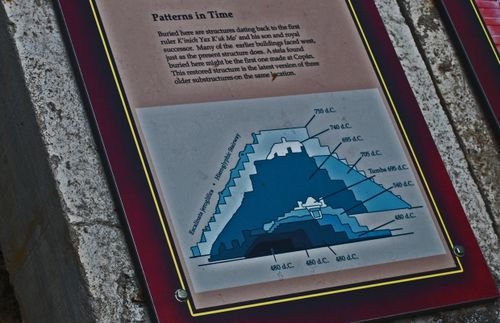
This would be interesting a bit later on….
Due South is the East and West Courts, also featuring wonderful stonework.
Also in this area are two tunnels under the East Court. The price at $15 each for two short tunnels is a bit on the steep side, but since we probably won’t be coming back, it was worth a try.
In the first tunnel, is the actual Rosalila Temple, which can also be seen in part 1. This sign shows how the temple sits under the structures above.
You enter the tunnels and travel in dimly lit tunnels… by slight stretch of the imagination, one can imagine oneself as an actual explorer walking into the unknown.
Coming right up to something like this can be downright dramatic.
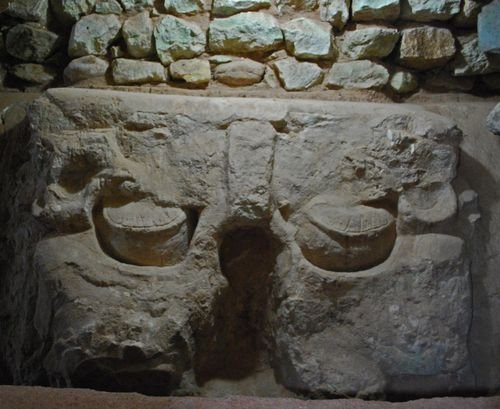
Our visit to the ruins at Copan was the highlite of the trip.
Even though Tikal was indeed grand, it was the detailed and intricate stonework, and what seemed to us to be a intimate setting that made the Copan Ruinas Archaeological Site stand out in my mind.
And lest you think a visit during the hot and dry season means lots of brown and grey colors, you’ll see brilliant flashes of color, from these….
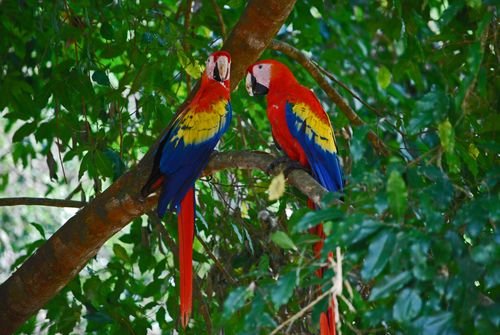
There are flocks of wild Macaws adding color….. boy did they add color….
The Copan Ruinas Archaeological Site is just 1 Kilometer from Copan Ruinas town which makes it a nice little walk, even when it was hot and humid.
We were happy to return to our room in time for a short break and nap. Oh, the joys of air-conditioning.
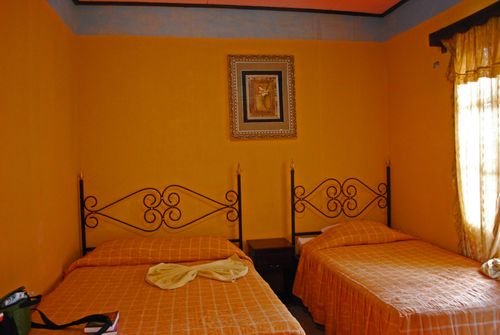
As I mentioned in a previous post, much of what goes on in Copan Ruinas happens around Parque Central. To the North of Parque Central is the Mercado.
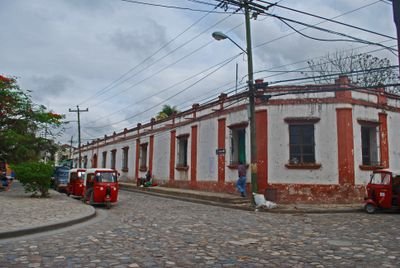
During the day folks are coming and going from the Mercado.

The combination of tourists and cowboy hat donning locals made for an interesting sight. Fruit vendors also line the streets in front of the Mercado, and the Missus purchased some marañon (cashew fruit) from one of them. The Missus wanted only just one, but was given a whole bolsa (bag) of mangoes and marañon…..
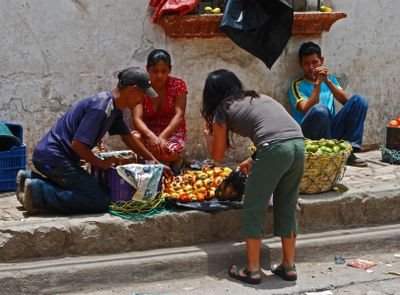
During the afternoon the vendors switch….and there’s no labor laws to keep the children from working….
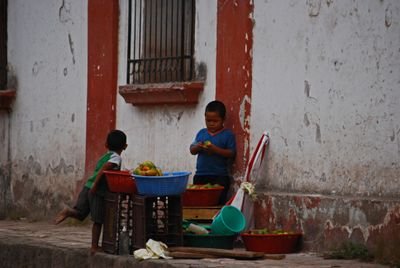
During the early evening the vendors change again…..and one of the Missus’s favorites is available.

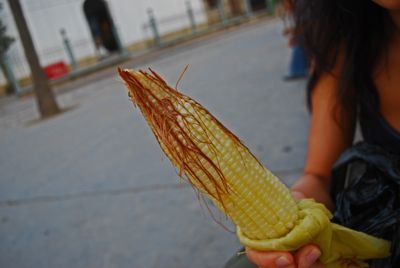
But of all of the vendors, the Missus’s favorite was the “Mango Man”……
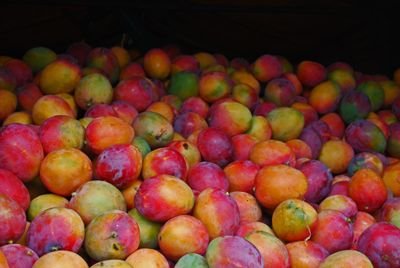
On one morning we saw a line standing out side the back of a huge truck on a side street.
The truck was full of mangoes, and the Missus bought a few, which She really enjoyed. Later that day, we saw the truck on another street. During the evening, the truck was at another location, and I swear as we were walking back to our room, I could hear snoring coming from the back of the truck. I’m guessing, much like the Durian Lady in Chiang Mai, these guys fill the truck with mangoes and head to town, selling mangoes from the back of the truck. When the mangoes were gone, they drove back to whence they came….. such is the life of the “Mango Man”.
Copan sure had a way of charming you……
